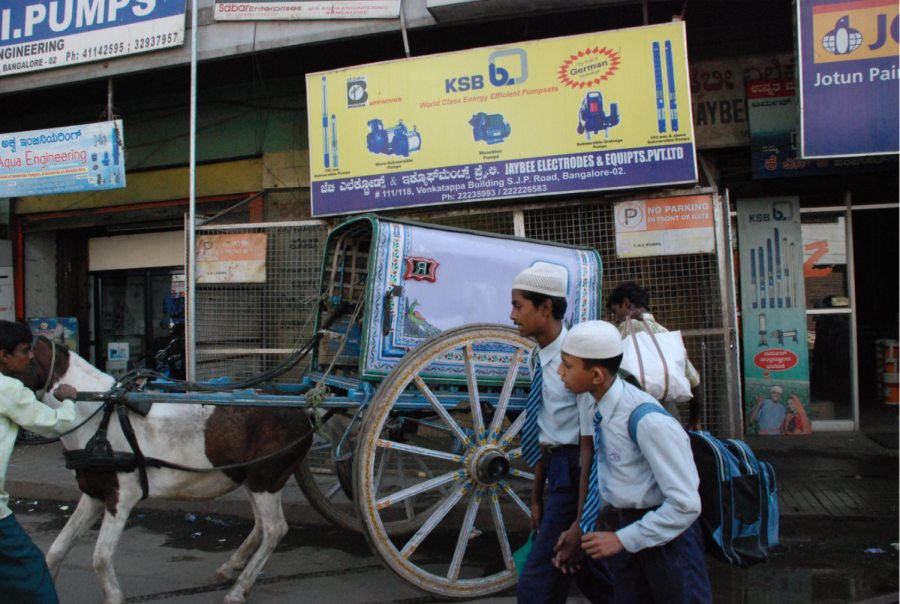Islamic Tradition in South Asia: A Discussion of India’s Hijab Ban
April 17, 2022
Photo Courtesy of S_OSH via Flickr
Hindu-Muslim tensions are at an all-time high in India. What started with one school in the southern Indian state of Karnataka has escalated into a national issue, as the ban against hijabs in the classroom was affirmed by the Karnataka government and subsequently the Karnataka high court. The ban comes at a time when anti-Muslim sentiment rages, and India’s incumbent Prime Minister, Narendra Modi, is criticized for encouraging violence against religious minorities. His party—the Bharatiya Janata Party (BJP)—which currently holds power, espouses a Hindu-nationalist, right-wing agenda whose silence on the issues is argued to be worsening already deteriorating Hindu-Muslim relations.
Dr. Anand V. Taneja, Assistant Professor of Religious Studies here at Vanderbilt, offered a historical, legal, and socio-cultural interpretation of tensions in India during a meeting of the SACEx discussion series titled Islamic Tradition in South Asia on March 30 at the Multicultural Community Space. The meeting started off with a video of a Muslim girl going to school, followed by a mob of Hindu nationalists donning red scarves. The red scarf has been adopted by Hindu nationalists as a visible symbol of their religion, similar to the function of the hijab for Muslims.
The mobbing of this young Muslim woman choosing to wear her hijab to school following the school’s decision to ban the hijab from the classroom and preceded the Karnataka high court affirmation of this decision. The court stated that the hijab is not an essential religious practice, and thus, it does not merit constitutional protection. Islamic religious scholars and Muslim women were not consulted in making this decision. Karnataka is a state governed by the BJP. Therefore, high court appointees and their personal philosophies would reflect the dominance of BJP ideals in the state.
Dr. Taneja explains, “India’s model of secularism is different from other countries because of its history. It relies on the government allowing the expression of all religions in public life. We could say India inherited a Moghul model of secularism in that it patronized different religious groups. The BJP is not working within this model. It makes Hindu practices normative and criminalizes the public practice of all minority religions, especially Muslims. ”
Dr. Taneja references the Quran to help understand if the hijab is a necessarily religious practice. Verses 30-31 in the Surah Noor (the verse of light) extol the virtue of modesty, which is cited as the origin of the hijab, and tells men and women to lower their eyes and for women to cover their chests. In the Islamic faith, modesty ensures the sanctity of relationships between unrelated men and women. Historically speaking, the traditional headwrap worn in Arabia—the birthplace of the prophet Mohammad—was often wrapped around the front of the chest after the revelation of these verses and is said to have evolved into the hijab.
Some argue that the hijab is not an essential religious practice because it is not explicitly mandated in the Quran. However, majority opinions of all of the major schools of Muslim jurisprudence (fiqh), believe that hijab is a religious obligation (fard). However, it is important to note that religion has evolved and adapted over time, and religion is not just what is written in a text. The hijab has meaning to Muslims in practice. Though some female Muslim scholars and authors, such as Lebanese author Nazira Zain al-Din and Moroccan scholar Fatima Mernissi, argue that the hijab is a patriarchal invention, Dr. Taneja cites Dr. Saba Mahmood’s work Politics of Piety in which she urges readers to consider the agency of women who choose to wear the hijab.
Ultimately, young women wearing the hijab—the exercise of bravery in public life in the face of oppression—have been the obstacle that has halted the BJP’s pursuit to create homogeneity in India’s populace.








